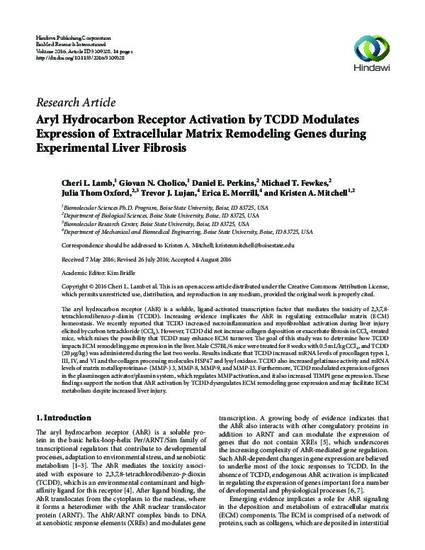
The aryl hydrocarbon receptor (AhR) is a soluble, ligand-activated transcription factor that mediates the toxicity of 2,3,7,8- tetrachlorodibenzo-p-dioxin (TCDD). Increasing evidence implicates the AhR in regulating extracellular matrix (ECM) homeostasis. We recently reported that TCDD increased necroinflammation and myofibroblast activation during liver injury elicited by carbon tetrachloride (CCl4).However, TCDD did not increase collagen deposition or exacerbate fibrosis in CCl4-treated mice, which raises the possibility that TCDD may enhance ECM turnover. The goal of this study was to determine how TCDD impacts ECM remodeling gene expression in the liver. Male C57BL/6 mice were treated for 8 weeks with 0.5 mL/kg CCl4, and TCDD (20 𝜇g/kg) was administered during the last two weeks. Results indicate that TCDD increased mRNA levels of procollagen types I, III, IV, and VI and the collagen processing molecules HSP47 and lysyl oxidase. TCDD also increased gelatinase activity and mRNA levels of matrix metalloproteinase- (MMP-) 3,MMP-8, MMP-9, and MMP-13. Furthermore, TCDD modulated expression of genes in the plasminogen activator/plasmin system, which regulates MMP activation, and it also increased TIMP1 gene expression. These findings support the notion that AhR activation by TCDD dysregulates ECM remodeling gene expression and may facilitate ECM metabolism despite increased liver injury.
This document was originally published in BioMed Research International by the Hindawi Publishing Corporation. This work is provided under a Creative Commons Attribution 4.0 license. Details regarding the use of this work can be found at: http://creativecommons.org/licenses/by/4.0/. doi: 10.1155/2016/5309328
Available at: http://works.bepress.com/trevor_lujan/13/
